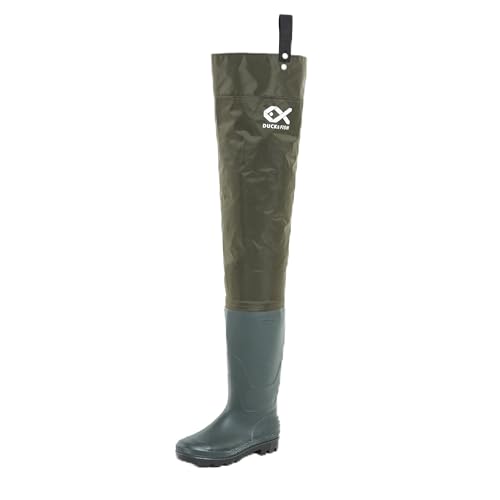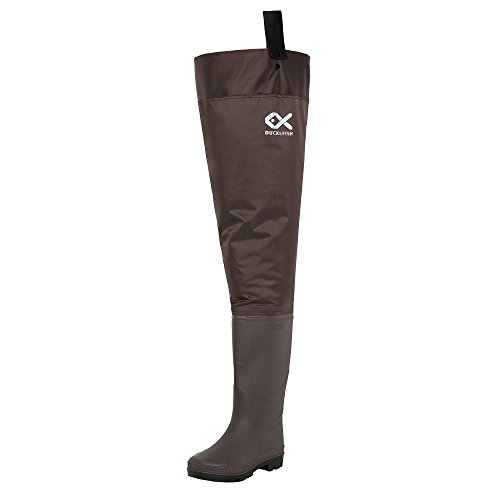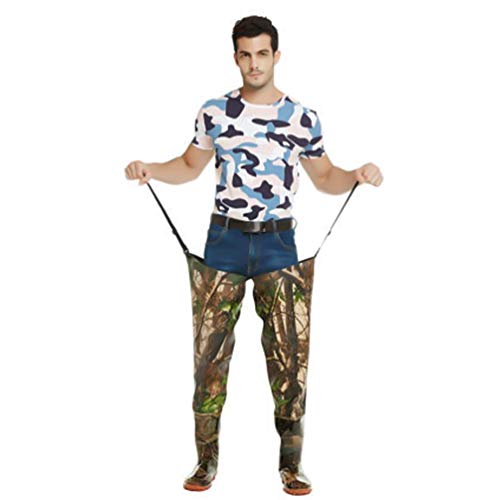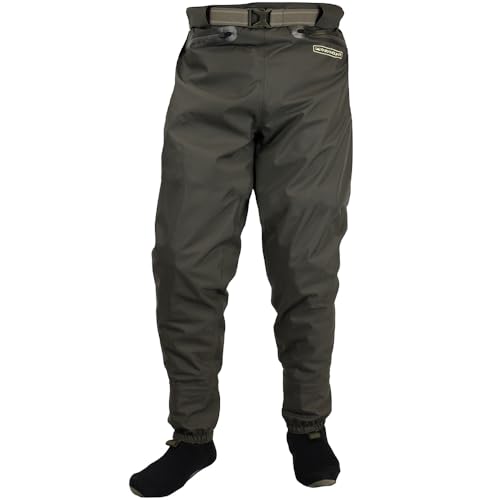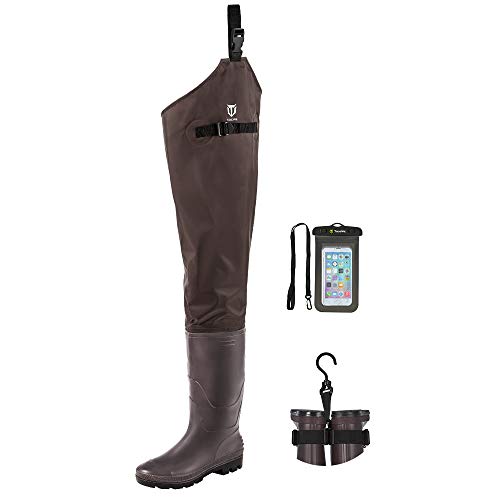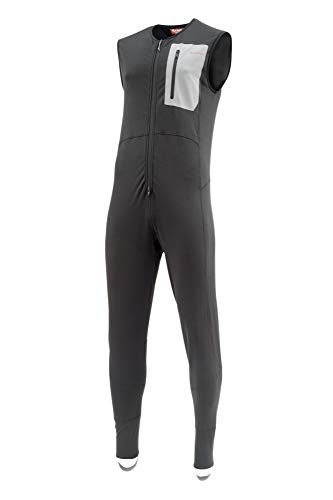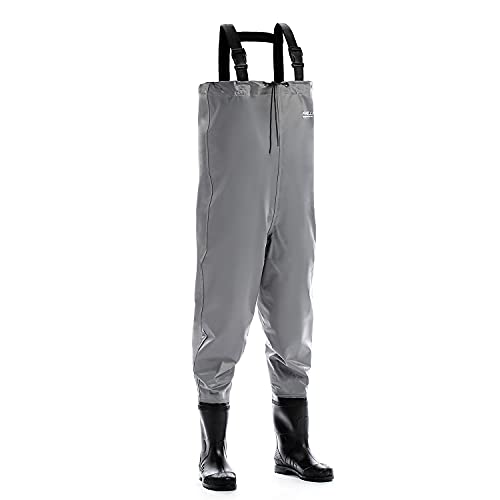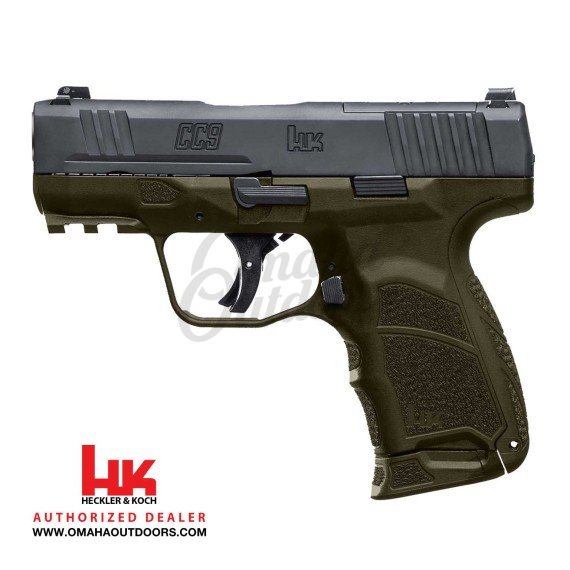HIP WADERS VS CHEST WADERS: PROS AND CONS FOR DIFFERENT ANGLING APPLICATIONS
Key Takeaways
- Consider weight and portability when choosing between hip waders and chest waders for angling purposes.
- Analyze pricing and value for money aspects to make an informed decision on which type of waders to invest in.
- Follow maintenance and care tips to ensure the longevity and performance of your waders.
- Choose between hip waders and chest waders based on fashion and style preferences for a personalized angling experience.
- Take into account the environmental impact and sustainability aspects of hip waders versus chest waders.
- Refer to user reviews and recommendations to determine the most suitable waders for your specific angling needs.
Weight and Portability Considerations
When considering weight and portability for your waders in trout fishing, it's essential to prioritize convenience without compromising quality. As an avid angler, the last thing you want is to be encumbered by heavy, cumbersome gear. Opting for lightweight materials such as nylon or breathable fabrics can significantly enhance your fishing experience. These materials not only provide comfort but also allow for easy movement when wading through streams and rivers.
Furthermore, looking for waders that are compact and easy to fold or roll up for transportation and packing is also crucial. Investing in a pair that comes with a carry bag or storage pouch can make it hassle-free to transport your gear to and from your fishing expeditions. Ensuring that the waders are not only lightweight but also portable will not only simplify your angling adventures but also enhance your overall enjoyment on the water.
TIDEWE Hip Wader, Lightweight 2-Ply PVC/Nylon Brown, Size 12
Stay dry and comfortable on your next fishing trip with the TIDEWE Hip Wader in Size 12, made with lightweight 2-Ply PVC/Nylon material in a stylish brown color
Product information
€42.93
Product Review Score
4.16 out of 5 stars
199 reviewsProduct links
Transportation and Packing Ease
When considering transportation and packing ease of waders, there are advantages and disadvantages to various designs and materials. Stockingfoot waders, which require separate wading boots, can be more cumbersome to pack due to the additional footwear. However, they offer the flexibility of using different boots for various terrains, which can come in handy when wading in deeper waters or rougher landscapes. On the other hand, bootfoot waders have the advantage of being an all-in-one solution, simplifying packing and reducing the risk of leaving a crucial piece behind. Still, bootfoot waders might be bulkier and less versatile when it comes to adjusting to different conditions.
In terms of transportation, lightweight materials used in waders can significantly benefit anglers who need to move around frequently. Neoprene waders offer excellent insulation properties in cold weather but can be heavier compared to the more modern breathable fabric options. The latter are lightweight and breathable, making them easier to transport and more suitable for varied weather conditions. Considering the advantages of easy packability and weight savings, breathable waders are often favored by anglers who prioritize mobility and versatility in their fishing expeditions.
Pricing and Value for Money Analysis
When evaluating the pricing and value for money of fishing waders, it's essential to consider the features offered in relation to the cost. Waders made from PVC generally tend to be more affordable compared to those constructed from neoprene, but they may lack the durability and maximum coverage provided by neoprene options. If you prioritize maximum coverage and longevity in your waders, investing in a neoprene pair might be the more cost-effective choice in the long run. While PVC waders may offer a budget-friendly option, they could require earlier replacement due to wear and tear, ultimately costing more over time. Therefore, considering the trade-off between initial price and long-term value is crucial in making an informed decision.
Moreover, comparing the features offered by different wader brands alongside their price points can assist anglers in determining the best value for money. Some higher-end waders may come with advanced features such as reinforced knees, built-in gravel guards, and adjustable suspenders, justifying their higher price tag. On the other hand, more affordable options may lack these additional features but still provide sufficient waterproofing and comfort for occasional fishing trips. Evaluating whether the extra features align with your fishing needs and frequency of use is vital in determining the value proposition of a particular wader model. By weighing the benefits of each feature against the cost, anglers can find a wader that strikes the right balance between affordability and functionality.
Features vs Price Comparison
When considering the features versus price comparison of wading boots and stockingfoot waders, it's crucial to weigh the components that directly impact performance and durability. Wading boots are a fundamental part of your gear, especially for rocky terrains. Look for boots constructed with high-quality materials like durable rubber soles, reinforced toes, and excellent traction. Investing in well-made wading boots might require a slightly higher budget initially, but the long-term benefits in terms of support, grip, and sturdiness make them worth the price. On the other hand, stockingfoot waders, though often pricier compared to bootfoot waders, provide better flexibility and agility. The seamless integration of these waders with specialized boots enhances mobility, comfort, and overall fishing experience.
Examining the features vis-à-vis prices of wading boots and stockingfoot waders enables anglers to make informed decisions based on their specific needs and budget constraints. While stockingfoot waders might lean towards the higher end of the pricing spectrum due to their attached booties and advanced materials like breathable fabrics, they offer unmatched versatility and comfort during long fishing expeditions. Comparatively, bootfoot waders, though generally more budget-friendly, can be heavier and limit movement without the adaptability of separate wading boots. To optimize your angling ventures, a balance between cost and features is essential. Choose gear that aligns with your fishing preferences while maximizing your investment for durable and high-performing equipment.
Simms Fleece Midlayer Wading Bib, Raven, X-Large
Stay warm and comfortable on your fishing trips with the Simms Fleece Midlayer Wading Bib in Raven, X-Large
Product information
€103.01
Product Review Score
4.94 out of 5 stars
27 reviewsProduct links
Maintenance and Care Tips for Waders
To maintain the longevity and performance of your waders, proper care and maintenance are crucial, especially as the colder weather sets in. Anglers and hunters alike rely on their waders for protection and comfort during extended periods in wet environments. Follow these simple guidelines to ensure your waders stay in top condition:
- Clean your waders after each use, especially if exposed to mud or saltwater. Use a gentle detergent and lukewarm water to hand wash or carefully machine wash depending on the manufacturer's recommendations.
- Inspect your waders regularly for any signs of wear, tear, or punctures. Repair small leaks promptly using a repair kit to prevent further damage.
- Ensure your waders are completely dry before storing them. Hang them upside down in a well-ventilated area to prevent mold and mildew growth.
- Store your waders in a cool, dry place away from direct sunlight to maintain the integrity of the materials and extend their lifespan.
By following these maintenance and care tips, anglers and hunters can enjoy their waders for many seasons to come, regardless of the challenging conditions they may face in the great outdoors.
Cleaning and Storage Guidelines
To ensure the longevity of your waders and provide maximum protection for your investment, proper cleaning and storage practices are essential. After each use, rinse off your waders with freshwater to remove any debris or sediments that might cause damage over time. Use a gentle brush to get rid of stubborn dirt, ensuring that you do not use harsh chemicals or abrasive cleaning methods that could weaken the fabric. Once cleaned, allow your waders to air dry thoroughly in a well-ventilated area, away from direct sunlight or heat sources that could compromise the integrity of the material.
When it comes to storage, it is crucial to keep your waders in a cool, dry place, away from any potential dampness or humidity. Storing them properly will help prevent mold or mildew growth, especially in warmer climates where moisture levels tend to be higher. To maintain the shape of your waders, avoid folding them for extended periods; instead, consider hanging them upside down, allowing them to air out and remain wrinkle-free. Additionally, inspect your waders regularly for any signs of wear and tear, addressing any issues promptly to ensure continued functionality and performance on your angling adventures.
Fashion and Style Choices
When it comes to fashion and style choices in the world of angling, anglers often seek waders that not only provide functionality but also reflect their personal taste and preference. For salmon fishing enthusiasts, opting for waders in earthy tones like olive green or brown can help blend in with the natural surroundings and provide a classic look that resonates with the traditional charm of salmon fishing expeditions. On the other hand, steelhead fishing aficionados might lean towards waders in shades of gray or blue for a modern and sleek appearance that complements the dynamic nature of steelhead fishing adventures.
In addition to color preferences, the design of waders also plays a crucial role in the fashion and style choices of anglers. Those who enjoy salmon fishing may appreciate waders with minimalistic accents and functional features that prioritize durability and comfort during long days on the water. For steelhead fishing enthusiasts, waders with a more streamlined silhouette and technical elements such as reinforced knee pads and adjustable straps can cater to their active and adventurous pursuits in challenging river environments. Finding the right balance between style and functionality is essential for anglers looking to make a statement while staying practical on their fishing excursions.
Foxelli Chest Waders - Waterproof Fishing Waders with Boots
Stay dry and comfortable on your next fishing adventure with Foxelli's waterproof chest waders
Product information
€42.91 €32.61
Product Review Score
4.46 out of 5 stars
87 reviewsProduct links
Color and Design Preferences
When considering color and design preferences for waders, anglers should prioritize functionality over aesthetics. Opting for darker shades like olive, brown, or camouflage patterns can help conceal stains or smudges from dirt, mud, or fish scales that are common during fishing trips. Additionally, dark colors are less likely to show wear and tear from sharp objects like fishing hooks or abrasive surfaces.
Design-wise, choosing waders with reinforced knee and seat areas can enhance durability, especially if anglers frequently kneel or sit while fishing. Selecting waders with a sleek, minimalistic design can offer a versatile look suitable for various fishing environments, whether in lakes, rivers, or streams. Moreover, ensuring that the design is suitable for shallow waters can prevent unnecessary challenges when wading in potentially rocky or uneven terrain.
Environmental Impact and Sustainability
In the realm of angling gear, waders hold a crucial position in enhancing the overall experience for fishing enthusiasts. However, the production and materials involved in making waders can pose potential hazards to the environment if not carefully managed. As an essential component of any angler's kit, it is imperative to consider the environmental impact and sustainability factors when purchasing waders. In this buyer's guide, we examine the various aspects that contribute to reducing the ecological footprint of waders while maintaining their functionality and durability.
When assessing the environmental impact of waders, key elements such as the sourcing of materials, manufacturing processes, and end-of-life disposal should be carefully scrutinized. Opting for waders made from eco-friendly materials, such as recycled polyester or neoprene alternatives, can significantly reduce the carbon footprint associated with their production. Moreover, selecting brands that adhere to sustainable production practices and promote responsible consumption aligns with the ethos of environmentally conscious angling. By adhering to these principles, anglers can make well-informed decisions that not only enhance their fishing experience but also contribute to the preservation of nature for future generations.
EcoFriendly Materials and Production Practices
For conscientious anglers seeking eco-friendly options, the choice of materials and production methods used in the creation of hip boots is a critical consideration. Opting for waders made from sustainable materials such as recycled polyester, natural rubber, or PVC-free fabrics can significantly reduce the environmental impact of angling gear. Manufacturers that prioritize sustainable practices not only contribute to the preservation of natural resources but also offer anglers comfortable and dry hip boots that meet performance standards without compromising on ecological responsibilities.
When assessing the eco-friendliness of hip boots, look for products that boast certifications such as Bluesign or Global Organic Textile Standard (GOTS), indicating adherence to stringent environmental and social criteria. Additionally, consider brands that employ ethical labor practices and demonstrate a commitment to reducing waste and energy consumption in their production processes. By choosing hip boots made from environmentally responsible materials and manufactured using sustainable practices, anglers can enjoy their fishing adventures knowing they are supporting conservation efforts while staying comfortable and dry throughout their angling pursuits.
| Material | Production Method | Certifications |
|---|---|---|
| Recycled Polyester | Manufactured from recycled plastic bottles | Bluesign, GOTS |
| Natural Rubber | Harvested from sustainable rubber tree plantations | Bluesign, GOTS |
| PVC-Free Fabrics | Utilizes alternative materials to PVC | Bluesign, GOTS |
User Reviews and Recommendations
User reviews and recommendations play a vital role in guiding anglers towards selecting the most suitable waders for their fishing adventures. When it comes to neoprene waders, feedback often highlights the excellent insulation properties of this material, keeping anglers warm in cold waters. Many users appreciate the durability of neoprene waders, particularly in rough terrains where potential snags or punctures could occur. On the other hand, breathable fabrics have gained popularity among anglers seeking lightweight and moisture-wicking options. Reviews frequently praise breathable waders for their comfort during extended fishing sessions, allowing moisture to escape, thus preventing sweat buildup.
In the realm of user reviews and recommendations, it is common to observe a split between anglers who prefer the warmth and sturdiness of neoprene waders versus those who value the breathability and lightness of breathable fabrics. Those favoring neoprene often cite its reliability in harsh conditions, such as cold weather or abrasive terrains, making them ideal for winter fishing or rocky riverbeds. Conversely, anglers inclined towards breathable fabrics emphasize the freedom of movement and comfort these waders offer, particularly in warmer climates or during high-mobility fishing activities. Ultimately, assessing individual needs and fishing environments is crucial in determining whether neoprene waders or breathable fabrics would better suit one’s angling preferences.
RealLife Experiences and Feedback
Waders made from PVC material are favored by many anglers for their lightweight construction and affordability. Users find that PVC waders provide decent durability and waterproofing for casual fishing trips in calm waters. However, some anglers have expressed concerns about the material's overall longevity, particularly when it comes to rigorous use in challenging terrains. On the other hand, rubber waders have gained popularity among anglers seeking robustness and puncture resistance. Those who have tested rubber waders appreciate their sturdiness, especially when wading through rocky riverbeds or abrasive environments.
In real-life scenarios, anglers have reported that PVC waders can sometimes lack the flexibility needed for long hours of angling, causing discomfort and restricting movement. Conversely, users of rubber waders have highlighted that while the material offers excellent protection against sharp objects, it can be heavier and less breathable compared to PVC alternatives. Balancing the pros and cons of PVC and rubber waders ultimately comes down to individual preferences and specific fishing conditions. The feedback shared by anglers underscores the importance of selecting the right material based on the intended usage and personal comfort requirements.
In sum, when selecting the ideal waders for your fishing ventures, it is essential to carefully assess your angling needs, whether for ice fishing or sea fishing. Comfort, durability, and functionality are key factors to contemplate. Weight and portability considerations play a significant role, particularly if you tend to travel long distances to various fishing spots. Moreover, pricing and value for money should not be overlooked, as they directly impact the features you can access compared to the price paid. Maintenance and care tips are vital to prolong the lifespan of your waders, ensuring they remain in top condition for future fishing endeavors.
Taking into account fashion and style choices can also enhance your overall angling experience. Opting for waders that not only meet your practical needs but also align with your aesthetic preferences can boost your confidence while fishing. Furthermore, considering the environmental impact and sustainability of the waders you choose can contribute to the preservation of aquatic ecosystems for future generations of anglers. Lastly, incorporating user reviews and recommendations into your decision-making process can offer valuable insights based on real-life experiences, aiding you in selecting the most suitable waders for your specific fishing pursuits.
Factors to Consider Before Making a Decision
When considering the purchase of waders for your outdoor adventures, there are several key factors to contemplate to ensure a well-informed decision. Firstly, examining the intended use of the waders is essential. Are they primarily for fly fishing in shallow streams, or will they be utilized for deep-water angling in lakes or rivers? Understanding the specific environments in which you plan to use the waders is crucial to selecting the appropriate material and design that will offer the necessary protection and functionality for your activities. Secondly, evaluating the seasonality of your outdoor pursuits is paramount. Are you an avid angler who ventures out in all weather conditions, or do you primarily engage in fair-weather fishing excursions? Opting for breathable waders with insulation for colder seasons or lightweight, quick-drying options for warmer weather can significantly enhance your comfort during outdoor expeditions.
Additionally, considering your individual preferences and comfort requirements is pivotal in choosing the right waders for your outdoor adventures. Assessing factors such as sizing options, adjustable features, and ergonomic design can contribute to a more tailored and comfortable fit, minimizing discomfort and fatigue during extended periods of wear. Moreover, reflecting on the durability and quality of the waders is fundamental in ensuring that your investment will withstand the rigors of diverse outdoor terrains and activities. By prioritizing durability, performance, and comfort in alignment with your outdoor pursuits, you can make a well-rounded decision that enhances your angling experiences and contributes to the overall success of your adventures.
- Consider the weight and mobility of the waders for ease of movement during various outdoor activities.
- Evaluate the ease of cleaning and maintenance of the waders to prolong their lifespan and ensure functionality.
- Research user reviews and feedback on different wader brands and models to gauge overall satisfaction and performance.
- Compare pricing and value for money to find a balance between quality and affordability that suits your budget.
- Take into account any additional features such as pockets, built-in gravel guards, or bootfoot options that may enhance your overall experience.
Conclusion
Choosing the right waders for your angling needs requires a comprehensive analysis of various factors such as weight, portability, pricing, maintenance, style, and environmental impact. By carefully considering these aspects, anglers can ensure they invest in high-quality waders that align with their preferences and values. Transportation and packing ease play a crucial role in the overall convenience of using waders, especially during fishing trips that involve moving between different locations. Opting for waders that are lightweight and easy to pack can significantly enhance the overall fishing experience, allowing anglers to focus on their pursuits rather than struggling with cumbersome gear.
When evaluating the pricing and value for money of waders, it is essential to strike a balance between desired features and cost. Conducting a thorough analysis of features versus price can help anglers identify waders that offer the best combination of functionality and affordability. Additionally, maintaining and caring for waders properly is paramount to ensuring their longevity and performance. By following cleaning and storage guidelines diligently, anglers can extend the lifespan of their waders and maximize their investment. Ultimately, selecting waders that suit individual preferences while also considering environmental impact and sustainability aspects can lead to a fulfilling angling experience that is both enjoyable and eco-conscious.
FAQS
Can hip waders be more comfortable than chest waders for shorter fishing trips?
Yes, hip waders are often more comfortable for shorter fishing trips as they provide less coverage and allow for more freedom of movement.
Are chest waders necessary for deep water fishing?
Chest waders are recommended for deep water fishing to ensure that water does not enter the waders and keep you dry.
Can hip waders be more affordable than chest waders?
Yes, hip waders are typically more affordable than chest waders due to their smaller size and less material used in their construction.
Are chest waders more versatile than hip waders for different angling applications?
Chest waders are generally more versatile as they provide more coverage and protection, making them suitable for a wider range of angling environments.
How should I store and clean my hip waders to ensure their longevity?
It is important to properly clean and store hip waders by rinsing them with clean water after each use and storing them in a cool, dry place away from direct sunlight.
Are there eco-friendly options available for both hip waders and chest waders?
Yes, there are eco-friendly wader options available that are made from sustainable materials and produced using environmentally friendly practices.
Do user reviews recommend hip waders or chest waders for fly fishing?
User reviews vary depending on personal preference and the specific angling application, but both hip waders and chest waders can be suitable for fly fishing depending on the individual's needs.
What factors should I consider before choosing between hip waders and chest waders?
Before making a decision, consider factors such as the depth of water you will be fishing in, the length of your fishing trips, your budget, and the level of comfort and protection you require.
